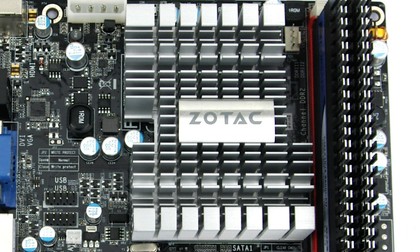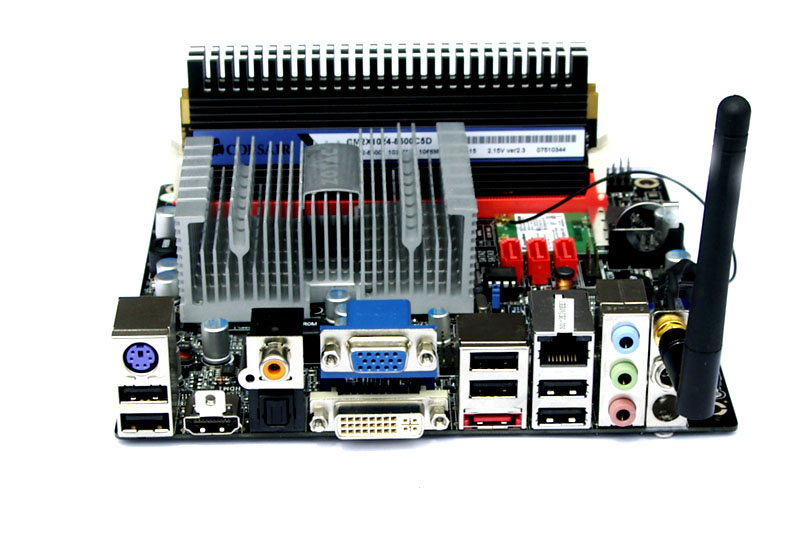Why you can trust TechRadar
It also sports a healthy array of video output options including VGA, DVI and HDMI, plenty of USB ports, a trio of SATA ports and even wireless networking, all as standard. It's also a completely passively cooled board making it effectively silent in operation and comes with its own laptop-style external power brick.
In other words, all you need to do it drop in a stick or two of memory, connect a hard disk and optical drive and you have a full featured PC. Hence, for our money, there are two basic usage models for this little mobo.
Firstly, it could be the basis of an occasional or casual secondary PC, perhaps on a kitchen worktop, in family room, that sort of thing. A cheap system that wouldn't be expected to do heavy duty number crunching. The other option is a cut-price alternative for a home theatre PC.
Desktop duties
As a general desktop tool, sadly, even Ion's multimedia prowess can't make the difference. We did our testing with Windows 7 RC-1. When Windows 7 arrives later this year, we think will be the mainstream choice for this sort of chipset.
It's definitely a bit kinder on hardware than the bloat-tastic Windows Vista. But in terms of day to day desktop use, it's still a little too much for even the dual-core Atom 330 to cope with. Responses are sluggish and web pages fail to scroll smoothly, for instance.

PASSIVE: there are no fans on the board, so it runs very quietly
As for outright processing power, well, our benchmarks suggest the Atom chip has about 1/10th the grunt of a high end quad-core chip. It's also worth noting that this board-and-chip combo is a very poor solution for gaming.
Even at a meagre resolution of 800 x 600, it only manages about 15 frames per second in a relatively undemanding game such as Call of Duty 4.
Cinema on a budget
If desktop duties get the better of the Atom-Ion combo, can it achieve redemption courtesy of its hardware video decode capabilities?
To a degree, yes. Generally, we're very impressed with Ion's PureVideo 2D video engine. In our Blu-ray disc test, it puts in a pretty much faultless performance.
Our test Blu-ray movie is Fanstastic Four coded in the demanding H.264 codec. Playback is completely smooth and CPU utilisation during decode is typically around 15 per cent. Incredible given the weakness of the Atom processor.

OUTPUT: the board has DVI, VGA and HDMI outputs
Nearly as good is playback of the most popular home generated HD format, namely x264 video streams in mkv container files. Using the hardware acceleration feature in Media Player Classis Home Theatre Edition, Ion correctly accelerates nine out of 10 of our test files which are a mix of 720p and 1080p content. When hardware acceleration works, things are silky smooth. When it doesn't, the fall back to full CPU decode on the Atom chips leads to pretty horrific stuttering.
Another slight demerit concerns streaming 720p content on BBC iPlayer. Currently, Ion doesn't support hardware decode (though we believe it is coming soon) and the consequence is extremely choppy playback.
Technology and cars. Increasingly the twain shall meet. Which is handy, because Jeremy (Twitter) is addicted to both. Long-time tech journalist, former editor of iCar magazine and incumbent car guru for T3 magazine, Jeremy reckons in-car technology is about to go thermonuclear. No, not exploding cars. That would be silly. And dangerous. But rather an explosive period of unprecedented innovation. Enjoy the ride.
